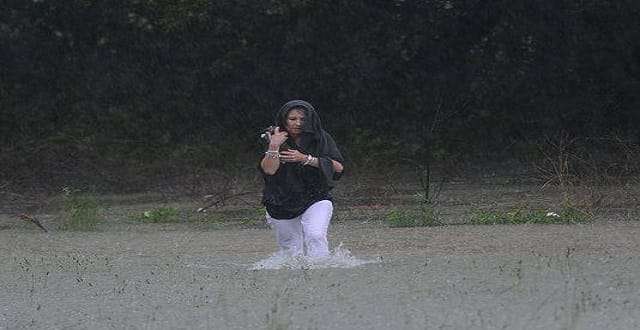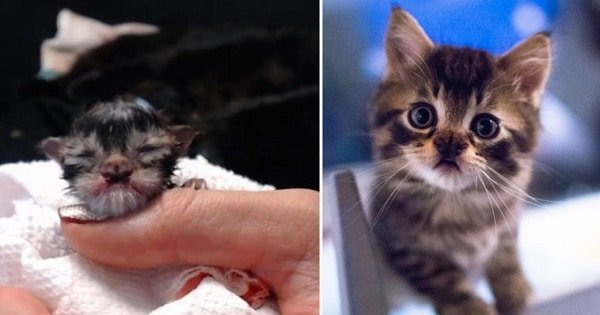A knowledge of feline first aid just may make the difference between life and death to your cat. However, if you try to administer first aid, and you are not sure of the correct procedure, you could do more harm than good.
GET TO THE VET
For all, minor injuries that can be treated at home, apply immediate first aid, but only if you are confident on the procedure, and then take your cat to the vet immediately. Calling the vet to your home only wastes precious time and the chances are that whatever emergency treatment is necessary, may be an operation, will be available only at the surgery.
If you have to drive your cat to the vet, do not travel alone. If possible, get a friend or a neighbor to accompany you. Left unrestrained in a carrier, the injured there is a good chance the cat may panic and damage itself further. It is much better to wrap the cat in a blanket and for someone to cuddle it; this reassures your kitty and makes it less likely to go into shock. Also, you will be less liable to have a road accident if you know the cat is securely held and as comfortable as possible.
After any accident, it is extremely important to treat the cat for shock: keep the cat quiet and warm – wrap it in a towel or blanket – until you can get to the vet’s surgery
ANIMAL BITES (see also snake bites)
Indications: Any free-ranging cat will,eventually get into a scrap with another cat at some point. The mouths of all animals, including humans, contain much bacteria which, once in the bloodstream, can cause infections.
Action; Immediately bathe around the wound with a diluted antiseptic suitable for cats, to decrease local infection; even a small puncture would result in an abscess.
Next, you should contact the vet who will give an antibiotic injection immediately, and prescribe the relevant follow-up course of antibiotic pills.
BURNS:
Indications: There are three types of burns, all of which will result in blistering of the affected part:
Contact burns, from direct contact with a hot surface.
Scalds caused by contact with boiling water.
Caustic burns from contact with toxic chemicals.
The most likely place for a cat to suffer the first two is in the kitchen. Caustic burns occur more often if a cat wanders into an area where dangerous chemicals are stored.
Action; Immediately hold the blistered area under cold running water. You should never administer ointments, lotions or butter to the burn. Do not puncture blisters at all. Get the cat to the vet as soon as possible
RESUSCITATION
Immediate resuscitation will be vital if your cat stops breathing. This can be due to a variety of causes, most commonly drowning (which includes newborn kittens that have inhaled amniotic fluid) and electric shock.
Action: Tilt back the cat’s head, hold the mouth shut, and then blow into both nostrils. You should then wait until air is expelled and repeat until the cat starts breathing on its own. If your cat still does not breathe, you should perform a heart massage. For a heart massage, lay the cat on its side. Rapidly press and then release the area of the chest behind the elbow where the heart is situated. You don’t have to worry how firmly you are in treating the cat; if it is not breathing it is dead. If you are able to revive your cat and it lives, a broken rib is the least of your worries.
DROWNING
Indications: A cat does not have to fall into a deep lake in order to drown; drowning takes place once the lungs become full of water instead of air, and can be caused in many ways. The urgency is to expel this water from your cat’s lungs so that the cat can breathe regularly again.
Action: Hold the cat with its head pointing in a downward position and slap its back firmly. If the water is not expelled, and the cat appears not be breathing, then drastic action is called for. Grab the cat firmly by the scruff of its neck and also by the rear legs, and then swing it firmly downward. Once the water has been expelled, the process of resuscitation is very similar to that suggest by the Red Cross for humans – mouth to mouth – but in the case of the cat mouth to nose is much more efficient.
ELECTRIC SHOCK
Indications: Cats are notorious for their chewing of random objects, and the danger of electric cables seems means nothing to them. If you cat somehow gets electrocuted, do not touch it until you have switched off and disconnected the appliance, or you, too, will receive a severe shock.
Action: Administer resuscitation in the same way as described in steps 1-3 above. You should then contact the vet immediately.
FALLS
Indications: It is a common thought that cats always land on their feet, but this is not necessarily true. Fractured jaws are much more common than fractured limbs are after falls, and even if a cat has not actually broken or fractured any bones, it may be concussed.
Action: If you suspect your cat has a broken bone, get to the vet as soon as possible, restraining the cat to stop it causing himself further damage. There is also the slight possibility of internal injury which you will not be able to detect on your own. Treat your cat for shock, and also contact your vet who will advise you how to move the cat, then take it straight to the vet.
It’s always good to be prepared! Emergencies can happen at any time!
Source






